Is political violence transforming Awami League?

The images that surfaced on online news portals, including this newspaper and social media, showing helmet-wearing activists of Chhatra League attacking protesters, including girls, with various weapons and sticks to break student demonstrations at several universities are deeply depressing, outrageous, and deplorable.
These demonstrators were demanding reforms to the quota system in civil service recruitment, which was scrapped in 2018 following a similar protest but restored on June 5 following a judicial ruling. This ruling shocked many young people. The government's appeal against the ruling suggests it also wants a change in the outcome.
The latest wave of violence against the protesters follows a public pronouncement by the ruling party's general secretary, Obaidul Quader, that Chhatra League would teach a lesson to those who allegedly undermined the spirit of the war of independence. This allegation centres around distortions, selective quotations, miscommunications, and a lack of empathy and understanding. These unnecessary escalations involving party members punishing protesters must stop immediately, and the responsibility squarely falls on the leadership of the ruling party.
These latest developments add to the concerns over the increasing tendency towards intolerance and the preference for violent means to suppress any dissent, whether political or apolitical. The latest data on casualties of political violence in Bangladesh, despite their shortcomings in accuracy, clearly show that the ruling party, Awami League, has seemingly lost control over the organisation. Consequently, the party has turned into fertile ground for factionalism and turf wars. It must be acknowledged that there is no established institutional mechanism for monitoring political violence in Bangladesh, and some civil society organisations, mainly rights groups, compile data from media reports on violence without independent verification, and their choice of news outlets is not always consistent.
This perhaps explains why the Human Rights Support Society (HRSS), in its latest report, stated that 91 people were killed in "political violence" in the first six months of this year, while Ain o Salish Kendra (ASK), another rights group, reported 41 deaths during the same period due to political rivalry and clashes.
Deadly political violence is not rare in our political culture, where the winner-takes-all principle drives political activists to the extreme. In a democracy, a strong opposition acts as a powerful deterrent to deadly violence. But in the absence of an effective opposition, it is natural for the rulers to face opposition from within, leading to internecine conflict. The ASK data, too, cited elections that led to incidents of violence.
The HRSS report, published on July 7, stated that 91 people were killed in 1,004 incidents of "political violence" in the last six months, leaving at least 4,026 people injured. The report observed that most casualties were due to election violence, dominance, and internal conflict between the ruling Awami League and Chhatra League. There were also a few clashes between police and opposition party leaders and activists.
According to the report, 50 people were killed in violence due to Chhatra League's dominance and infighting on public university campuses. While some may argue that the higher levels of violence and casualties during this period were due to the parliamentary election held on January 7 and subsequent upazila elections, both were boycotted by the main opposition BNP and most other opposition parties. Allies of the ruling party, including the current parliamentary opposition Jatiya Party, also largely stayed away from upazila elections, leaving these elections as intra-party contests for the ruling Awami League.
It could be argued that the ruling party's decision to allow and, in some cases, encourage its members to run against its official nominees propelled intra-party rivalry. Many political observers had warned about this likelihood well before these elections, and their reasoning cannot be dismissed outright.
However, looking at historical data of political violence over the last 10 years suggests a disturbing political transformation largely within the ruling party. For example, the number of casualties of political violence in 2022, compiled by ASK, shows that Awami League versus Awami League conflicts resulted in 12 deaths that year, compared to one death from violence between the Awami League and the BNP. According to a Dhaka Tribune report, an earlier publication by ASK compiling data over nearly five years (57 months) between January 2013 and September 2017 found that Awami League and its affiliate organisations had an average of 15 incidents of internal conflict per month, leading to the loss of three lives each month.
This situation raises the question of whether the current leadership of Awami League, on its 75th anniversary, will consider answering crucial questions about whether this transformation into violent politics will help or harm the party in the long run. Additionally, will they take urgent measures to stop further loss of lives among their members and political rivals?
Kamal Ahmed is an independent journalist. His X handle is @ahmedka1
Views expressed in this article are the author's own.
Follow The Daily Star Opinion on Facebook for the latest opinions, commentaries and analyses by experts and professionals. To contribute your article or letter to The Daily Star Opinion, see our guidelines for submission.

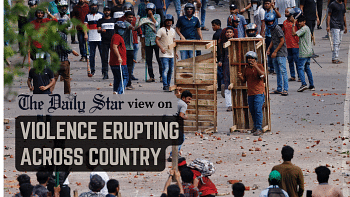
 For all latest news, follow The Daily Star's Google News channel.
For all latest news, follow The Daily Star's Google News channel. 
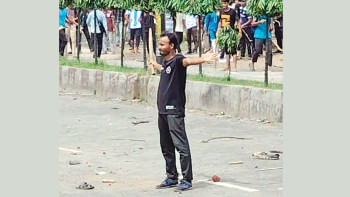
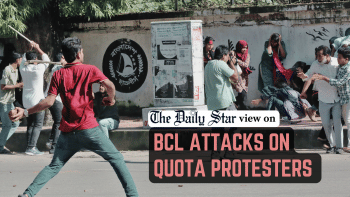


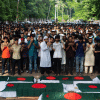
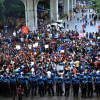

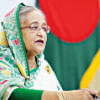
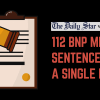

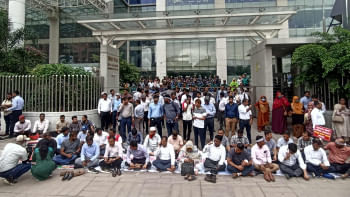
Comments